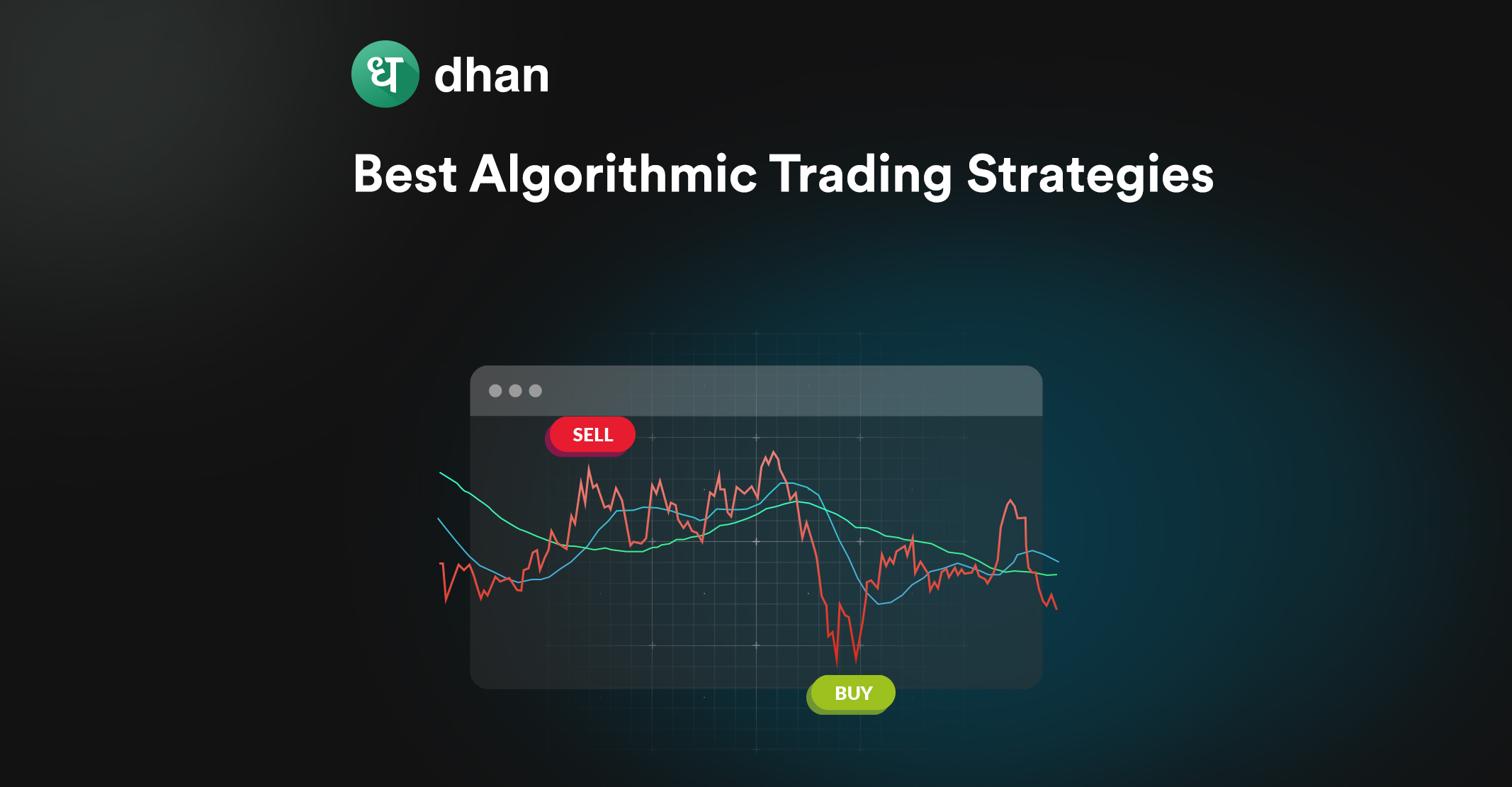Do you know what algorithmic trading is? Or what is algo trading strategies? It’s a specific set of clearly defined instructions aimed to carry out a task in trading. There are times when a human trader can’t handle the enormous volume of trading, and that’s when algorithmic trading comes in handy.
In trading, mathematical algorithms examine every quote and trade, identify liquidity opportunities, and turn the information into trading decisions.
If you’re looking to optimize your trading strategies, this article covers some of the best algo trading strategies. It will help you to decrease transaction costs and take control of your trading like the market leaders.
Best Algo Trading Strategies
The effectiveness of algorithmic trading strategies depends on various factors, including the specific market conditions, assets being traded, and the trader’s risk tolerance. Here are some most popular algo trading strategies:
1. Trend Following Strategies
Trend-following strategies aim to capitalize on asset price trends.
One common technique involves using moving averages, where traders buy when a short-term average crosses above a long-term one (golden cross) and sell when the short-term average crosses below the long-term (death cross).
Momentum indicators can also be used to identify strong upward trends for buying and weakening momentum for selling.
These strategies rely on the assumption that existing price trends will continue, making it essential to identify and act on trend changes for profitable trading.
2. Mean Reversion Strategies
In mean reversion strategies, you look for assets whose prices have strayed significantly from their average historical values. When you find an asset trading below its typical price, consider buying it. Conversely, if the asset’s price is higher than usual, think about selling it.
The idea is that prices tend to return to their historical averages over time, potentially offering profit opportunities.
Keep a close eye on historical data and be prepared to act when you spot these price deviations.
3. Arbitrage Algo Trading Strategies
In arbitrage strategies, you identify price differences between two related assets. Let’s say you notice that two stocks in the same industry typically move together but currently have a price gap. You’d buy the cheaper stock and sell the more expensive one, aiming to profit as their prices converge.
It’s a way to exploit market inefficiencies by taking advantage of temporary discrepancies in prices, ultimately making gains from these imbalances.
Keep in mind that arbitrage requires quick execution and can be highly competitive.
4. Weighted Average Price Strategy
This is one of the most effective algorithmic trading strategies that focuses on either sales volume or time. This strategy involves systematically releasing smaller portions of a large volume holding. The timing is determined based on historical volume profiles of the asset or set time intervals between the start and end of the trading period.
The primary objective is to shield against the impact of market volatility by executing trades as close as possible to the volume-weighted average price or time-weighted average price.
The combination of a well-designed system and algorithm ensures precise and error-free execution, a significant advantage over manual trading processes.
5. Statistical Arbitrage Strategy
Statistical arbitrage is a short-term algorithmic trading strategy that capitalizes on temporary price discrepancies between related assets, like stocks. These price imbalances quickly self-correct, making manual tracking challenging.
This strategy employs a complex mathematical model to monitor price changes and execute trades before corrections occur.
For instance, if Hero Motocorp’s stock price drops, TVS Motors’ price tends to follow but recover shortly. The algorithm leverages this market inefficiency by buying low and selling high, enabling traders to profit from these swift price adjustments.
6. Breakout Strategies
In breakout trading, you identify crucial support and resistance levels. When the asset’s price surpasses these levels, it triggers a trade.
Imagine drawing lines on a price chart: you go long (buy) when the price breaks above a resistance line or short (sell) when it drops below a support line.
This strategy aims to capitalize on significant price movements after the breakout, making it essential to monitor charts and execute trades swiftly when key levels are breached. It’s a proactive approach to catch potential trend shifts or extended price movements.
7. Pairs Algo Trading Strategy
In this strategy, you analyze two correlated assets simultaneously. Identify when one deviates from its historical relationship with the other.
When a significant deviation occurs, take a long position on the underperforming asset and a short position on the outperforming one, expecting them to converge.
This strategy aims to profit from the relative price movements of the two assets, regardless of overall market direction. Monitor correlation closely and be prepared to adjust positions as the relationship between the assets evolves.
You should remember that successful algorithmic trading needs constant attention, adjustments, and risk management. Adapt your strategies to changing market conditions and test them through backtesting.
Be cautious when using trading algorithms; thorough research and testing are crucial before using them in live markets. For algo trading, you can also open an account with us.
Conclusion
Choosing the best algo trading strategies for trading involves a careful blend of analysis and adaptability. It’s not just about complexity but finding a strategy that fits your goals. Whether it’s trend following, mean reversion, or arbitrage Strategies, the key is understanding, testing, and refining the strategy.
📌 You can also read:
- Types Of Trading In Stock Market
- Arbitrage Trading in India: Meaning, Process, Strategies
- Gap Trading – What Is Gap Up And Gap Down Strategy?
- What is Automated Trading – How Does It Work?
Happy Trading 📈
Disclaimer: This blog is not to be construed as investment advice. Trading and investing in the securities market carries risk. Please do your own due diligence or consult a trained financial professional before investing.



